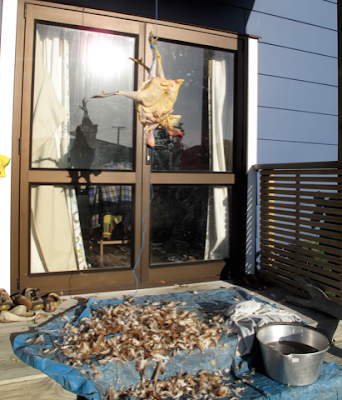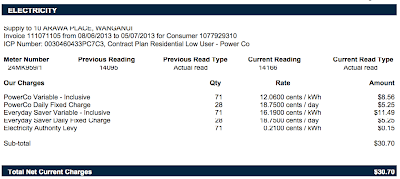When I was in intermediate school in the states, I took lots
of nonsense state and national tests, but I didn’t need the government to tell
me how dumb I was - my older brother was quite enough, thank you.
I was rubbish at these tests, and especially the “verbal”
(English language) sections. I could never complete the “reading comprehension”
sections in time, and was baffled by the
this-is-to-that-as-the-other-is-to-what? I-was-like-wtf-mate!
Now that I’m no longer in school and have learned to think
for myself, I understand the thought process of these types of questions. For
example, the All Blacks are to winning as _______ is to losing. While there are
lots of options here, I think most of us would agree that Wallabies is the most appropriate.
Try this one for yourself: Insulation is to an eco-home as
________ is to a garden.
While there may be a few possibilities, the best response is
compost.
Compost and insulation share the following characteristics:
Neither makes good cocktail party conversation.
Each remains slightly mysterious to many people.
Both are the unsung heroes of their respective domains.
Each must be done properly to function well.
An energy-efficient dwelling is only as good as its
insulation, and an organic garden is only as good as its compost. There are
many other factors that go into a home or garden, but these are the biggies.
Oh, and one more thing they have in common: Winter is a good
time for both.
Obviously the colder months are when we rely on insulation
in our homes to keep us warm, but winter is also an excellent time to make
compost in preparation for spring planting. Nothing beats having an excess of
high quality compost at the ready.
Making your own compost is the cheapest and best way to
obtain a quality product. It’s not rocket science or brain surgery, but some
knowledge and skills are required.
I usually make 1 cubic metre at a time, although at the
moment I have six cubic metres going. Hot composting relies on a certain ratio
of volume to surface area to stay warm – up to 50 or 60 degrees – which is
reached at about 1 cubic metre. As the pile ‘cooks’ the volume shrinks as
carbon dioxide and water vapor are ‘exhaled’ by the micro-organisms munching
happily away.
Hot composting requires a balance of carbon-rich material
such as shavings or brown grasses and nitrogen-rich materials such as manure,
food scraps or green grass clippings. The materials should be layered so as to
maximize the contact between carbon and nitrogen. Build a pile but don’t constrain
it.
I am an advocate for free-range compost: no bins, no boxes.
This makes turning the pile easier, as oxygen is the limiting factor. Turning a
well-balanced pile once every 48 to 72 hours for one month will result in the
best compost you’ve ever made. This has been the secret to my vege production
for over a decade.
However, I have run into a challenge lately with some
so-called ‘biodegradable’ products that are being promoted around Wanganui.
After four months of hot composting they show no sign of decomposition. Upon
contacting the supplier, I’ve learned they require 6 to 18 months to break
down, which doesn’t fit my timetable. I guess the bottom line is that not all
biodegradables are created equal. Caveat emptor.
Want to learn more? Check out these upcoming workshops:
The Carbon-Neutral Lawn: 13th July, 3-4 pm, or 14th
July, 3-4 pm.
How to REALLY Compost: 13th July, 4-5 pm, or 14th
July, 4-5 pm
Registration essential: 344
5013 - 022 635 0868 - theecoschool@gmail.com


































